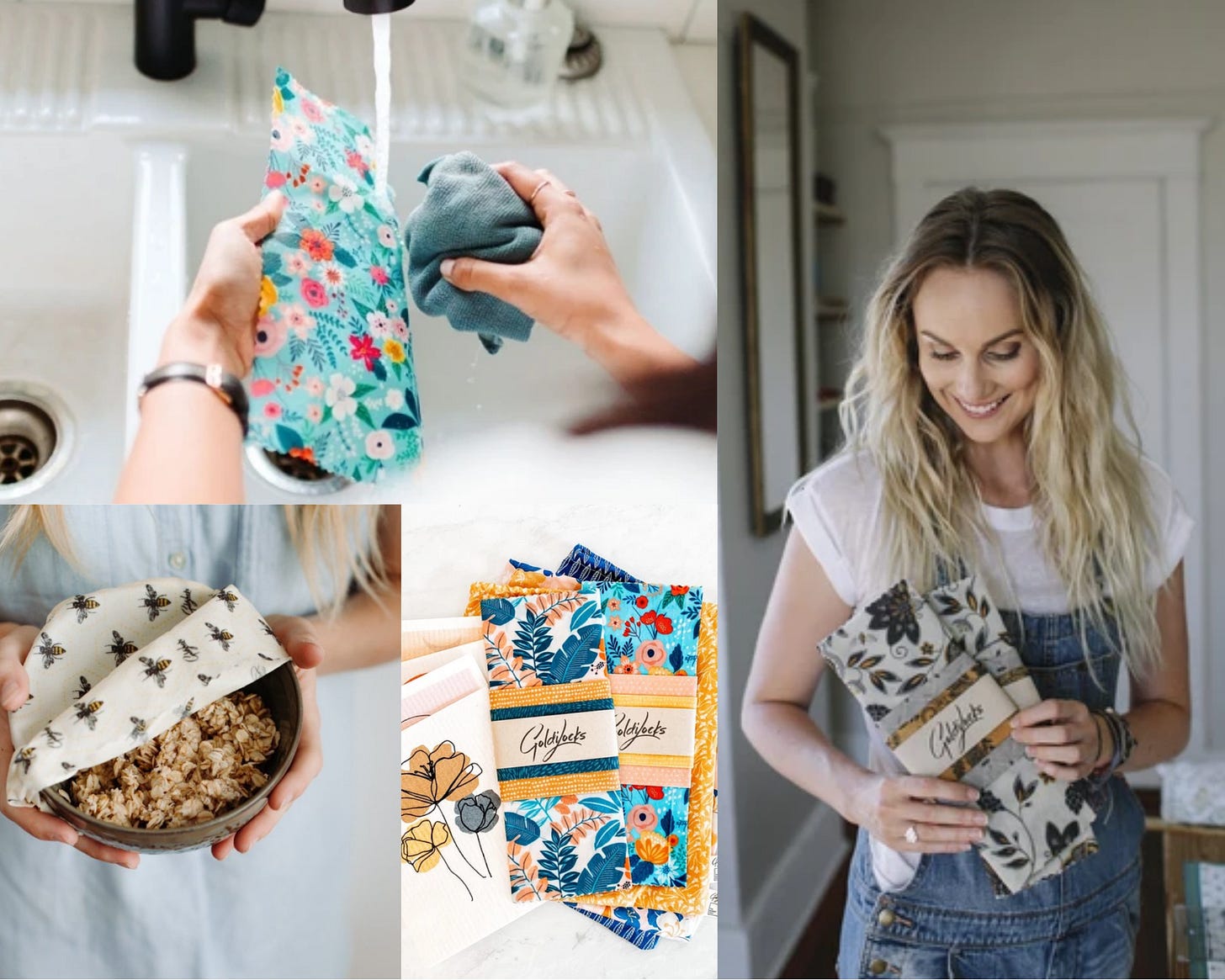This product has pollution designed into it
But we've been made to believe otherwise

The plastics industry produces roughly 400 million tonnes of plastic every year.
And this is just growing.
Around 40% of this is designed to be used only once- a.k.a. Single-Use Plastic.
And it isn’t designed with recycling in mind.
But as consumers, we are made to believe that if we sort it appropriately, it will get recycled.
Unfortunately, less than 10% of plastic is recycled.
So even if we are segregating our waste properly, the probability of it ending up in an ocean or landfill is way higher than it getting recycled.
Let’s see how these 3 startups have designed products that are supposed to last (and not pollute)⬇️
From one plastic to another…With our groceries, we bring home plastic as well. Once we start consuming the products, we transfer the leftovers into another form of plastic- ziplock bags, cling wrap, deli containers. And then we throw them in single-use plastic. Did you know that 60% of all the plastic that has been produced since the 1950s is just sitting in our landfills?
Breaking the plastic chain…Kat Nouri wanted to inspire consumers to try and live a healthier and more sustainable lifestyle. To replace single-use plastic, she started Stasher by building an endlessly reusable, non-toxic silicone storage bag. These self-sealing airtight bags can be used to store leftovers, beauty products or any other household items.
They look identical to disposable snack bags at home- making it easier for people to transition to a more sustainable option.
The versatile silicone bags can be used for freezing, boiling, in a microwave, and even an oven.
Need to wash them?- Just put them in the dishwasher with your other utensils.
Sustainable products can be convenient too…Kat and her team have built a product that is effective, more functional and is contributing towards keeping millions of single-use plastic out of the oceans and landfills. As a BCorp certified brand, a portion of their sales go to non-profits (like Surfrider and 5Gyres) that are preserving and rehabilitating our oceans.
A small problem is still a problem…Have you seen this video where an olive ridley turtle has a plastic straw stuck in its nostrils and scientists are trying to remove it? (warning- it’s bloody). A plastic straw takes around 200 years to decompose. Different studies show that plastic straws account for a minuscule (~0.03) percent of the total plastic waste in the ocean. But they are still one of the top 10 most commonly found items in beach cleanups around the world.
Add this to your diet chart…US-based Loliware is on a mission to replace a billion plastic straws annually. They are replacing them with kelp-based edible straws. Kelp, also known as seaweed, is an aquatic alga that grows in vast quantities in many coastal locations.
Like plastic pellets that are used to make plastic straws, the company makes seaweed pellets.
Using a proprietary process, they are then made into biodegradable straws that feel like plastic.
They call their products hyper-compostable as unlike other bioplastics, it does not need to be composted at an industrial facility.

Don’t want to eat it, no problemo…After using the straw, the consumers can compost it in their backyard or playground. Or just eat it (tastes like fruit roll-ups). Even if it reaches the ocean, lab data suggests that it breaks down in weeks. The primary material, seaweed, is not just a renewable and regenerative material but is also highly durable.
Can you breathe?…In 2016, Natgeo did an experiment where it trapped humans that accidentally stepped on a huge plastic bag, inside that bag. The idea was to show how marine creatures feel when they get trapped in plastic. Plastic wraps are one of the biggest culprits here. If they don’t end up covering a marine creature, they attach bacteria and metals onto them and break down into microplastics. Fishes confuse them with food and consume them.
Bees to the rescue…Amy Hall saw this problem firsthand while she was working with a shark conservation project in Fiji. She started changing her own habits thereafter and founded Goldilocks Goods, which develops a natural and eco-friendly alternative to these plastic wraps.
Their natural wraps are made with just 4 ingredients- beeswax, 100% cotton, tree rosins and jojoba oil.
All the beeswax is sourced locally in Victoria, B.C., Canada.
Each reusable beeswax wrap is made individually by hand in small batches.

Wait, there’s more…Apart from reducing plastic waste, the beeswax wraps are solving another problem- food waste. The breathable quality of the beeswax wraps keeps food fresh for a longer duration, reducing the quantity of leftovers that end up in the trash. In episode 24 of Epic, I had spoken to the founder Amy Hall👇
🔍Want to refresh your knowledge of plastic?
Try solving the crossword below
Here are the responses to last week’s crossword-
If you like it, please share 🤷🏽♂️ Not My Problem with your network by clicking the button below. That would mean a lot.
📢 Shoutout to Paridhi who helped me write this edition.
Hit that 💚 if you liked today’s edition.
📧 Got some feedback to share or want to say hello? Just reply to this email.
Thanks and see you next week😄







